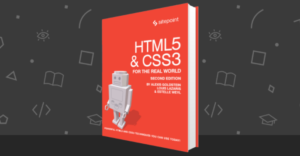Write Java Web Apps in Visual Basic (or JavaScript!)
More from the JavaOne 2006 keynotes…
One of the new key features in Java 6 (Mustang), available now in beta and weekly snapshots and slated for release in October, is support for alternative languages running on the JVM. In particular, Java 6 will ship with support for running JavaScript code as a first-class citizen, with complete access to the Java class libraries and the ability to call back and forth between Java and JavaScript code within a single application.
At JavaOne on Tuesday, Sun took the wraps off of two new projects that are taking advantage of this capability in a way that will be of interest to web developers. The first, Project Semplice, brings the Visual Basic language to the Java platform. Not meant for porting existing VB apps over to Java, but rather for allowing Visual Basic developers to transition to the Java platform while leveraging their existing skills, Semplice lets you write code using VB syntax (including all the automatic type conversion, support for properties implemented by methods, and other niceties that VB developers love so much) that compiles to Java classes that will run on the Java 6 VM. As J# is to Java, Semplice is to Visual Basic.
In the demo during the keynote, Semplice developer Tor Norbye (regular on the Java Posse podcast) demonstrated building a simple web application in VB using a pre-release version Java Studio Creator. Starting from a blank page, he dragged a number of JavaServer Faces (JSF) components onto the page, then double-clicked one to add an event handler to it. The editor that popped open contained a new event handler written in Visual Basic, to which he quickly added some simple implementation code, then compiled and ran the application.
The application, he pointed out, made use of JSF components written in Java, and he accessed properties of these directly from his Visual Basic code. Additionally, the JSF components call the Visual Basic event handling code from within Java. Semplice allows these two languages to work together transparently.
Thanks to features of the VB language, instead of having to call farenheit.getText() to obtain the value of the farenheit form field, he could refer to it as farenheit.Text, or even just as farenheit, thanks to Visual Basic’s flexibility. He was also able to use the resulting String value in an arithmetic calculation (i.e. celsius = (farenheit - 32) * 5 / 9) without having to convert it to an integer.
For developers that want the power of Java when writing server-side business logic, but want a more flexible and loosely-typed language when writing web presentation logic, Visual Basic running on the Java VM could well be a very attractive option!
Even more flexible than Visual Basic, however, and likely much more familiar to them as well is JavaScript. So why not write the server-side code of web applications in JavaScript? That’s exactly what Project Phobos will do. With Project Phobos, you can either write server-side application logic with JavaScript directly within your HTML templates (much like you can in PHP or JSP), or in separate “helper” scripts to keep your code separate from your markup.
Along with the many other projects working to bring other languages to the Java VM, these two projects give developers even more choices when considering Java as a web development platform.
The video of both demos may be found in Segment Three of the Sun Technical General Session: Java Platform Roadmaps: The Big Stuff, Today & Tomorrow from Day 1 of the JavaOne 2006 conference.
Full details and screenshots of Semplice in action on project developer “HerbertC”‘s blog.
Frequently Asked Questions about Writing Java Web Apps in Visual Basic or JavaScript
How can I start writing Java web apps in Visual Basic?
To start writing Java web apps in Visual Basic, you need to have a basic understanding of both Java and Visual Basic programming languages. You will also need to install the necessary software development kits (SDKs) for both languages. Once you have these, you can start by creating a new project in Visual Basic and then importing the necessary Java libraries. From there, you can start writing your Java code within the Visual Basic environment.
Can I use JavaScript to write Java web apps?
Yes, you can use JavaScript to write Java web apps. JavaScript is a versatile language that can be used in conjunction with Java to create dynamic web applications. You can use JavaScript to handle client-side operations while Java handles server-side operations. This combination allows for a more interactive and responsive web application.
What are the benefits of using Visual Basic for Java web app development?
Visual Basic provides a user-friendly environment for developing web applications. It has a simple syntax that is easy to understand and use, making it a great choice for beginners. Additionally, Visual Basic has a rich set of libraries and tools that can help speed up the development process.
What are the challenges of writing Java web apps in Visual Basic or JavaScript?
One of the main challenges of writing Java web apps in Visual Basic or JavaScript is the need to understand and work with multiple programming languages. This can be difficult for beginners or those who are not familiar with one or both of the languages. Additionally, there may be compatibility issues between the languages that need to be resolved.
Can I use Visual Studio Code for writing Java web apps?
Yes, Visual Studio Code is a versatile code editor that supports multiple programming languages, including Java and JavaScript. It has a rich set of features that can help streamline the development process, including syntax highlighting, code completion, and debugging tools.
How can I improve my skills in writing Java web apps in Visual Basic or JavaScript?
There are many resources available online to help you improve your skills in writing Java web apps in Visual Basic or JavaScript. These include online tutorials, video courses, and coding challenges. Additionally, practicing regularly and working on real-world projects can help you gain practical experience and improve your skills.
What are the best practices for writing Java web apps in Visual Basic or JavaScript?
Some of the best practices for writing Java web apps in Visual Basic or JavaScript include following coding standards, writing clean and readable code, and testing your code regularly. Additionally, it’s important to keep up-to-date with the latest developments in the languages and technologies you’re using.
Can I write Java web apps in other programming languages?
Yes, Java web apps can be written in a variety of programming languages, including Python, Ruby, and C#. The choice of language depends on your specific needs and preferences, as well as the requirements of the project.
What are the key differences between Visual Basic and JavaScript?
Visual Basic and JavaScript are both high-level programming languages, but they have some key differences. Visual Basic is a statically-typed language that is primarily used for Windows application development, while JavaScript is a dynamically-typed language that is primarily used for web development.
How can I debug Java web apps in Visual Basic or JavaScript?
Debugging Java web apps in Visual Basic or JavaScript can be done using the debugging tools provided by your development environment. These tools allow you to step through your code, inspect variables, and track down errors. Additionally, using good logging practices can help you identify and fix issues more quickly.
Kevin Yank is an accomplished web developer, speaker, trainer and author of Build Your Own Database Driven Website Using PHP & MySQL and Co-Author of Simply JavaScript and Everything You Know About CSS is Wrong! Kevin loves to share his wealth of knowledge and it didn't stop at books, he's also the course instructor to 3 online courses in web development. Currently Kevin is the Director of Front End Engineering at Culture Amp.
Published in
·Databases·Debugging & Deployment·Development Environment·PHP·Programming·Web·April 19, 2014



